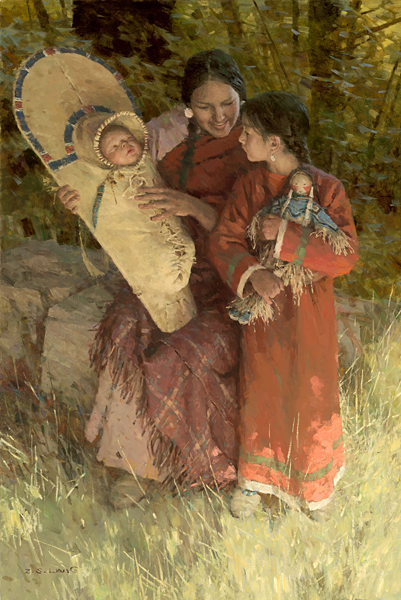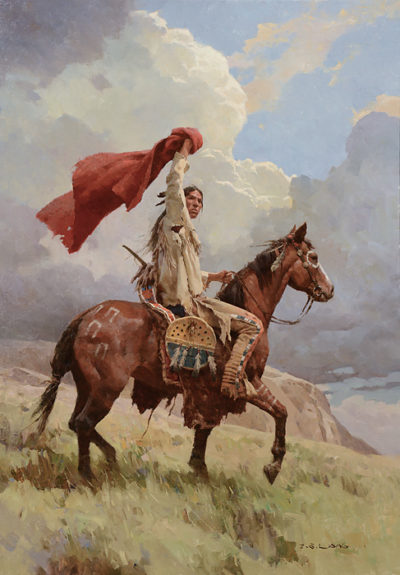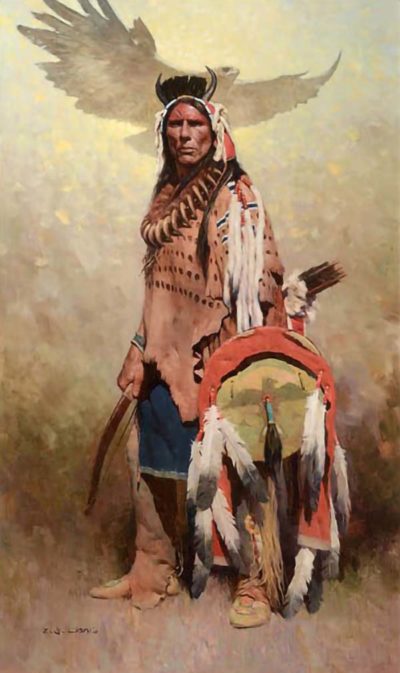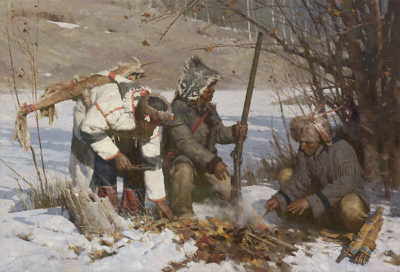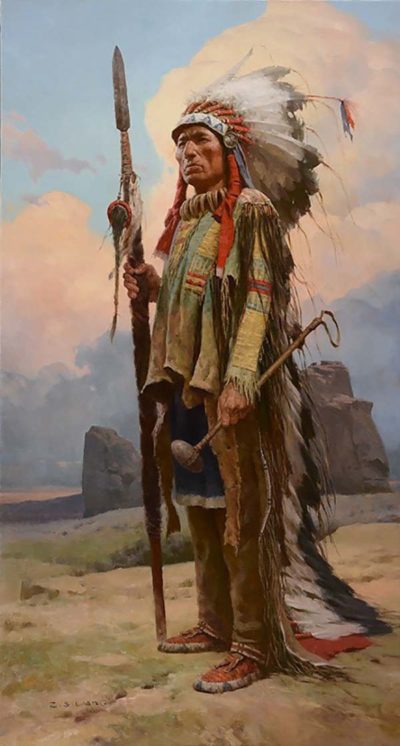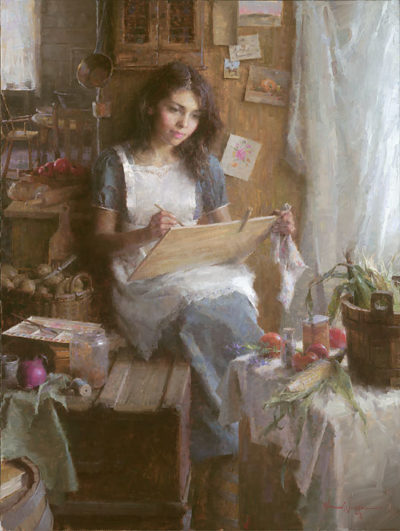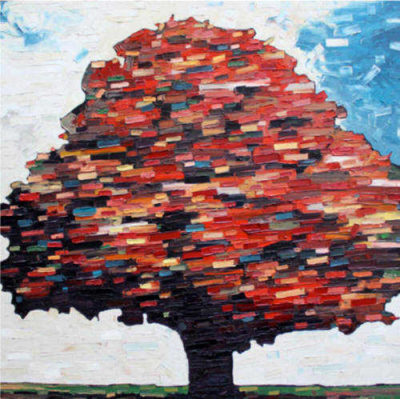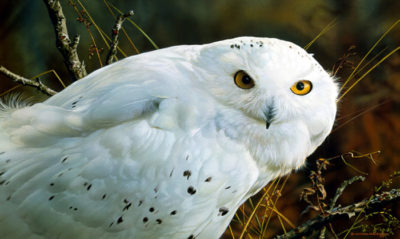Beneath the Cottonwoods
Artwork Description
“Maternal love is in all races of mankind. Blackfoot girls married young and looked forward to becoming mothers. Much like today, children played house and mimicked adult life,” says Z.S. Liang of “Beneath the Cottonwoods.” “A Blackfoot mother would use a cradleboard, traditional across most Native American tribes, to protect and carry her baby. Cradleboards were made from curved and cross-braced willow-wands covered with buckskin and decorated with beadwork. An apron with lacing held the baby in. Notice the beaded umbilical cord amulet hanging on the cradle, a talisman for the child. The snake-shaped amulet is for a boy and a lizard form is for a girl.”
“One essential feature of any cradleboard is the large frame surrounding the baby’s head. This frame protected the baby from falls or swinging branches of trees as families moved through the woods. A carrying strap passed around the mother’s shoulders and chest so she could wear it. This strap also allowed the cradleboard to be hung from a saddle pummel or even a convenient tree. Cradleboards had the advantage of allowing babies to see what is going on around them and to participate in family life.”
The art of Z.S. Liang is regarded as some of the most important and beautiful created today. Museums and collectors buy his original paintings before the public has a chance to even see them. But you do have the opportunity to posses and enjoy in your home the art of the most significant artists working today.

